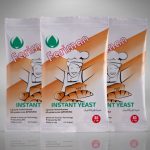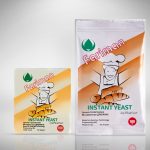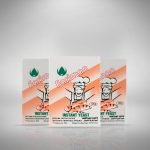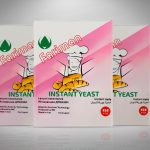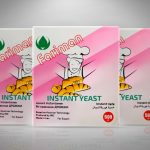Yeast
Yeast are categorized as cellular fungi. A lot of people deal with different kinds of fungi every day. For example, edible fungi (mushrooms) in supermarkets, baking yeast for puffing of bread dough, and fungi for blue cheese and fungi for producing antibiotics in medicine. A lot of people see yeast and mushrooms same as fruit and vegetable.
Until now more than 600 types of yeast have been identified in nature that are widespread along with other microorganisms, and are part of earth, vegetables, seas and water. Some types of yeast have become habitants of human and animal bodies, while others are in very special places and only appear in certain times of the year. Other species are very common and can be separated from different sources. Bread yeast, which is used all over the world in order to expand bread dough is well known. Bread yeast is made from special yeast called Saccharomyces cerevisiae. The scientific name of this yeast consists of the two words of “Sacharon”, meaning sugar, and “Myces”, meaning edible fungus. And “Cerevisiae” derives from Ceres, the goddess of agriculture in ancient Rome.
The bread yeast is produced according to the needs of baking bread. A normal yeast cell is about the same size of a human red blood cell and in appearance, changes between spherical and oval. In order to get an impression of the size of this cell, it is interesting to know that one gram of compressed yeast contains seven billion fermentative cells. Ferments use the same method as vegetation to reproduce. In this process, a new bud starts to grow from the available cell wall. Finally this bud separates from mother cell and forms a separate female bud. Every fermentative cell produces between 12 to 15 cells before losing its ability to reproduce during sprouting,.
During commercial production, yeast grows under very careful control in an environment containing glucose, which mainly includes beet root molasses and sugar cane. Under an ideal growth, a fermentative cell can reproduce after 12 to 13 hours. Yeast is the most important additive in bread industry. And is the main factor for increasing the bulk of dough and creation of appetizing scent in bread. Although the ratio of yeast usage in baking products is very little, having a good yeast and proportional usage of it is one of the most important factors in improving bread baking industry.
Yeast function in bakery
Fermented yeast is the most important additive in baking products. Three main functions of yeast in baking bread are as follows:
Production of carbon dioxide
In the process of glucose in flour turning to alcohol, carbon dioxide is produced and when it is exiting the bread protein network, increases the bulk of it. Yeast is the main factor in this process.
Increasing the bulk of the dough, puffing up
Increase in the bulk of effective dough results from chemical influence of yeast on existing protein in flour during alcohol and acid producing, and the physical influence of carbon dioxide is due to this process. The result of this interaction is a light, hollow and perforated dough. This is the main characteristic of products that contain yeast.
Improving the scent and taste of dough
Yeast gives bread a special taste and scent by producing secondary metabolisms, and fermentation activities such as KITONS, Volatile alcohol, organic acid, Aldonids and STERS. Some of these elements such as alcohol are released during baking. Some others react to themselves or other mixtures, in order to create new and more complex scents.
These reactions initially happen on the outer layer of dough and then spread in baked bread.
History of the yeast
It can be said that yeast is the oldest industrial microorganism known to humankind. It seems that man was using yeast , prior to spread of written language. Hirocliff states that ancient Egyptians were using yeast 5000 years ago and were benefiting from its chemical features in producing alcoholic drinks and puffing of bread dough.
Early humans did not understand the biochemical factors of these reactions and probably looked at it as a secret phenomenon and or even magic.
It is believed that the initial fermentation systems for production of alcohol and dough and baking of bread by infectious microorganisms of flour, other milled grains, fruits and or other extracts containing sugar became active. These microorganisms, which mainly included wild yeasts and lactic acid making bacteria, could be found in gain seeds and fruit. In the bible there is a mention of yeast as soft dough like intermediator for baking bread. A little of this dough was used in the start of fermentation of every dough. Using of these natural intermediators, in the passing of time became a great help to refine yeast. Therefore these refined samples in wine, beer or dough were kept for future production.
In the past centuries, bakers would use this fermentation as a side product to make beer and wine. Therefore, early bakers had a significant role in choosing this microorganism in this industry. In the latter part of the 1760s, after the invention of microscope, as a result of Louis Pasteur’s work, yeast became known as a living microorganism and an alcoholic fermentation factor and an expansive factor for increasing the size of bread dough. Immediately after this discovery, separation of yeast in a pure cultural environment became possible. Because of this new knowledge and the ability to separate the primary stub free from any kind of contamination in a laboratory environment, the stage was ready for mass production of bakery yeast. Since then, bakers, scientists and producers of yeast have been trying to produce a pure fermentative stub which can satisfy the special needs of baking industry.

